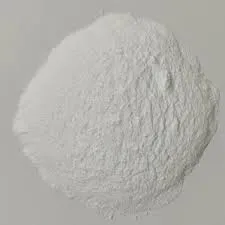The Fascinating World of Thiocyanate Properties, Applications, and Implications
Thiocyanate, represented by the chemical formula SCN⁻, is an anion that plays a significant role across various scientific disciplines, including chemistry, biology, and environmental science. It is formed when thiocyanic acid (HSCN) dissociates in aqueous solutions, and it has garnered attention for its diverse applications in analytical chemistry, agriculture, and medicine. This article delves into the properties, uses, and broader implications of thiocyanate in today's world.
Chemical Properties of Thiocyanate
Thiocyanate is a linear molecule, characterized by its simple structure consisting of sulfur, carbon, and nitrogen. The sulfur atom is bonded to a carbon atom, which in turn is bonded to a nitrogen atom. This linear conformation results in unique chemical properties that make thiocyanate a versatile compound. It is relatively stable under standard conditions, but it can participate in various chemical reactions, particularly with metals. Thiocyanate is known for its polarity, which enables it to form interactions with both polar and nonpolar substances.
The thiocyanate ion can form complexes with various metal ions, such as iron, copper, and silver, making it an essential component in coordination chemistry. These complexes are often colored and can be utilized in analytical applications to detect and quantify metal ions in solution. For instance, the formation of colored complexes between thiocyanate and iron ions is commonly employed in spectrophotometric methods for quantifying iron in environmental samples.
Applications of Thiocyanate
Thiocyanate has several significant applications across different fields
. In agriculture, it is used as a herbicide and pest control agent due to its ability to interfere with the metabolic processes of certain plants and pests. Farmers may use thiocyanate-based products to manage weeds and protect crops from harmful organisms, thereby enhancing agricultural productivity.thiocyan

In the realm of medicine, thiocyanate's relevance is particularly noteworthy. It is produced in the human body as a byproduct of the breakdown of cyanogenic compounds, which are found in various foods such as cassava. Thiocyanate plays a role in the regulation of thyroid function; it can inhibit the uptake of iodine by the thyroid gland. This property has both positive and negative implications for human health. On one hand, adequate levels of thiocyanate can help in the management of hyperthyroidism, as it limits the availability of iodine for thyroid hormone production. On the other hand, excessive thiocyanate levels in the body can lead to thyroid dysfunction and other health issues.
Moreover, thiocyanate is being explored for its potential therapeutic uses. Recent studies have highlighted its antimicrobial properties, suggesting that it may be effective against a range of pathogens, including bacteria and fungi. This aspect opens up new avenues for the development of antimicrobial agents that utilize thiocyanate as an active ingredient.
Environmental Implications
The environmental impact of thiocyanate cannot be overlooked. It can be found in wastewater from industrial processes, agricultural runoff, and even in treated drinking water, which raises concerns about its potential toxicity to aquatic life and human health. High concentrations of thiocyanate can lead to cyanide-like effects, posing risks to ecosystems and biodiversity. Therefore, monitoring and regulating thiocyanate levels in environmental matrices are crucial for safeguarding aquatic habitats and public health.
Researchers are increasingly focusing on the bioremediation of thiocyanate-contaminated environments, exploring methods to reduce its concentration and mitigate its harmful effects. Microorganisms that can metabolize thiocyanate are being studied as potential agents for cleaning up contaminated sites, thus offering an environmentally friendly solution to thiocyanate pollution.
Conclusion
Thiocyanate is a compound with diverse implications in various scientific and industrial domains. Its unique properties enable its use in agriculture, medicine, and analytical chemistry, while its environmental impacts necessitate careful management and regulation. As research continues to unfold, the understanding of thiocyanate's multifaceted roles will undoubtedly expand, leading to new innovations and strategies for utilizing this intriguing compound effectively and safely. Whether in enhancing agricultural practices, contributing to medical advancements, or addressing environmental challenges, thiocyanate remains an essential focus area for scientists and researchers in the years to come.

